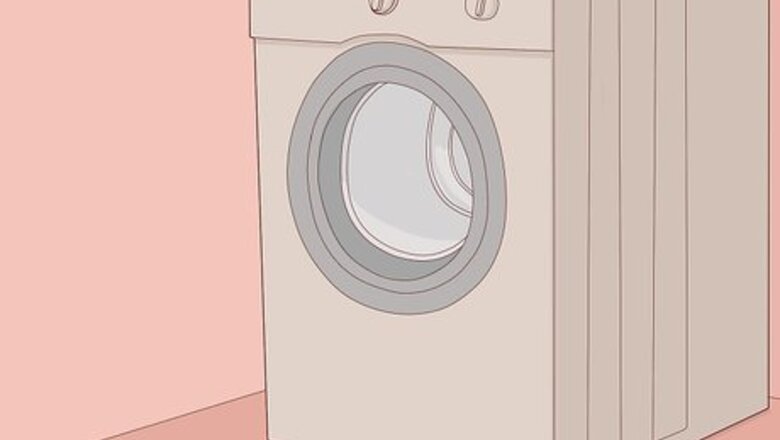
views
Setting Up Your Washing Machine
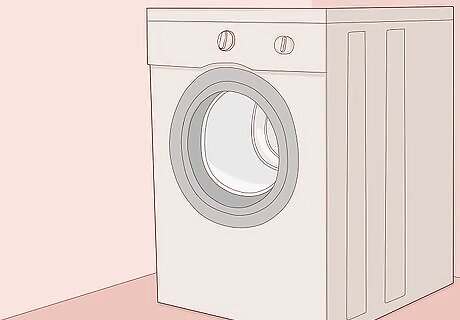
Choose the right spot. Depending on your living situation, you may be limited in your options of places to put a washing machine. However, you should try to find a spot that will reduce the risk of uneven loads, leaks, and potential damage to your appliance or your home. It is also important to have access to hot and cold water, a drain and an electrical outlet that can support your washer and dryer. A level, hard-floor surface is an ideal location for a washing machine. Make sure the room temperature will not fall below 32 degrees Fahrenheit (0 degrees Celsius). The washer should also be away from sources of heat like your furnace, radiators, or fireplaces. Because of the utility requirements, most houses and apartments have specific areas intended for use with a washer and dryer.
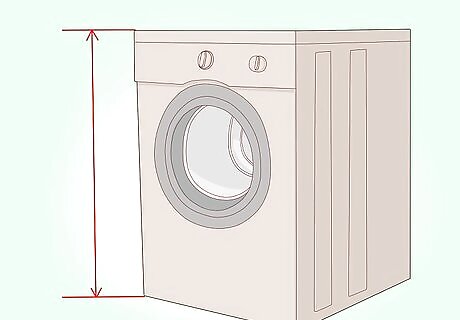
Measure the area to ensure a proper fit. Washing machines come in a number of shapes and sizes, so you may need to measure yours to ensure it will fit properly in the space you intend to put it. You should also measure the doorways it will need to pass through in order to reach its final destination. Remember that you will need to measure the width as well as the depth of both the washing machine and the space you will put it to ensure a proper fit. Make sure the doorway’s interior dimensions are wider than the washing machine. Many washing machines are most narrow when carried or loaded onto a hand truck from the side.
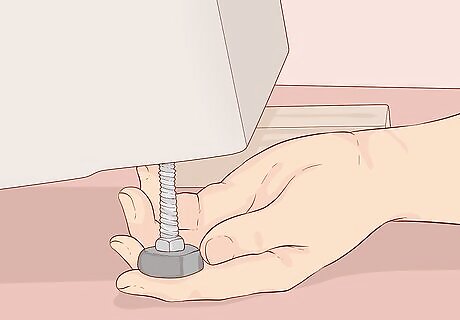
Adjust the leveling feet. Leveling feet are the little legs underneath the appliance itself. These are adjustable and should be calibrated so that your washing machine will be as level as possible. Turning leveling feet clockwise will lower that corner of the washer and turning them counter clockwise will raise it. Place a carpenter’s level on the top of the appliance, then twist the feet located at the bottom of each corner as needed until the level reflects an even surface. A nut around each leg prevents them from turning once you have set the proper height for each corner. Loosen the locking nuts by turning them counter clockwise independent of the leg itself. Once you have leveled the appliance, turn the nuts clockwise until they’re tight to lock the legs in place. Remember to use the level both left to right and from front to back, as the washer must be level in both directions.
Hooking Up the Plumbing
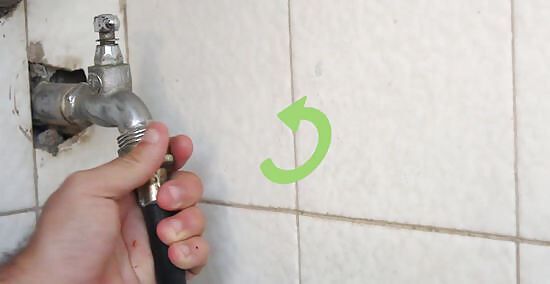
Remove the old washer. If you are replacing an existing washing machine, you should disconnect and remove it entirely before bringing the new one into place. Make sure to shut off the water leading to the old machine before disconnecting it and have a bucket in place to catch the remaining water as it drains from the lines once they’ve been disconnected. Be careful not to allow any draining water to come into contact with the power outlet for the washer and dryer. Make sure you turn off both the hot and cold water that leads to the old machine before disconnecting it. You may need pliers or a wrench to disconnect stuck on hoses attached to the old washing machine.
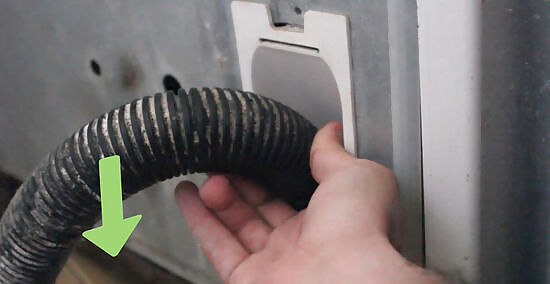
Connect the water supply hose. The water supply hose is what feeds water into your washing machine when you do laundry. If you have pipes that run to your washing machine's location you can simply attach the hoses here. Make sure to tighten your water connections snugly to prevent leaks from developing, but do not overtighten. You can usually make these connections tight enough using only your hands. If the hose is too short you can purchase a longer hose meant to withstand higher pressure. Never try to stretch the hose, as this may cause it to break. Connect the hot and cold hoses to their respective water pipes. These pipes should resemble a hose spigot with threads to screw water lines onto, though some houses and washers may use a different connection method. A lot of connectors have a rubber washer to ensure water can’t leak through the threading once connected. If yours doesn’t, you may want to wrap the spigot in Teflon or plumbers tape.
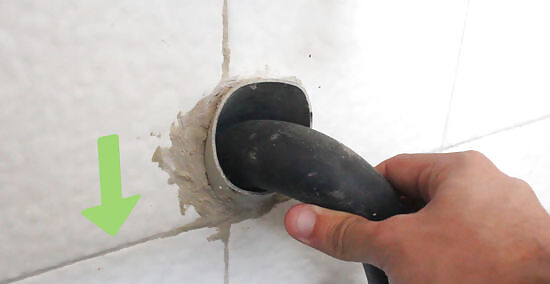
Set up the drain hose. The drain hose needs to be installed correctly to prevent leaks. If your washer is located near a sink, you can feed the drain hose over the edge and into the sink. If you do not have a drain or sink basin near the washer, you may need to use a standpipe. Make sure the pipe is secured down or it may loosen over time, causing flooding. If using a sink, attach a plastic hose guide to keep the hose bent downward and make sure the hose doesn't reach too high above the washer - 60 to 90 centimeters (23 to 35 inches) is ideal. Your washer might come with a plastic hose guide. If not, you can purchase one at your local hardware store or through an online retailer. If using a standpipe, choose one with a diameter greater than that of the hose. Position the standpipe so that its top is higher than the washing machine's water level. If your washer does not indicate the water level, you can estimate it by examining the interior of your washer.
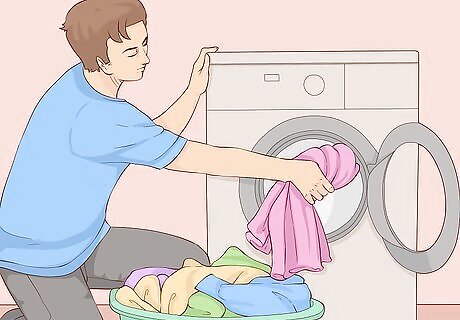
Try a test run. Once your washer is hooked up, you should be ready to do a load of laundry. However, instead of loading your laundry and leaving it unattended, it's best to closely monitor your washer for the first few loads to ensure that there are no leaks. Wait by the washer and check around, under, and behind the appliance. If you see any signs of leaking, tighten all the connections around that leak, taking care not to overtighten. If the washer won't stop leaking, turn it off and call a professional plumber to inspect your pipes and connections.
Preventing Damage

Check your supply hoses. Old supply hoses that are cracked or worn out are likely to cause problems. You should check your supply hoses periodically to ensure they're still in good shape. Try to take a look at the hoses every few months if possible. If you see any cracks or stretch marks, you'll want to replace your hoses as soon as possible. If you're installing new supply hoses, consider buying no-burst hoses. They have a stainless steel sheath that prevents them from tearing and protects your home.
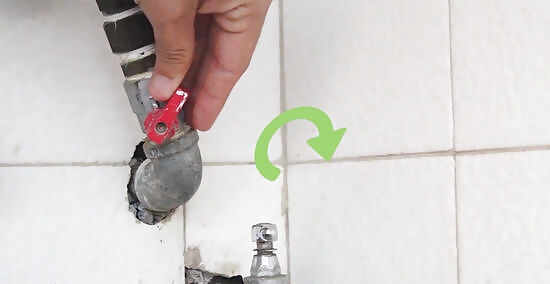
Switch off your washing machine valve. The hoses that connect your pipes to the washing machine should go through a washing machine valve. This valve is usually at the spigot and can be used to prevent water from passing into the lines. Close the valve by turning it or moving the lever from one side to other, depending on the hardware. You can switch off the valve whenever you're not going to be home for extended periods of time. Switching off the valve when your washing machine isn't in use will help take some pressure off the hoses that connect the washer to your pipes. This may help preserve the hoses and reduce the chances of a leak.
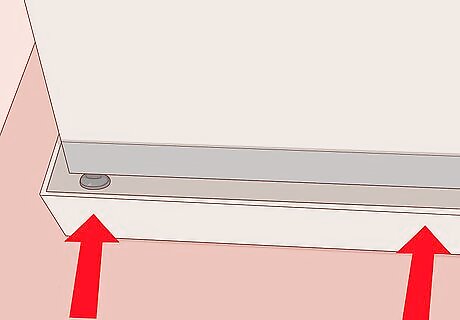
Use a drain pan. If your washer hose bursts, it can leak many gallons of water and cause thousands of dollars in damage to your home. One easy way to reduce the risk of this happening is to use a washing machine drain pan under your appliance. If your washing machine is located on a floor other than the basement, it is particularly recommended that you use a drain pan. Some buildings may even require that tenants use a pan. To install a drain pan, simply reposition your washing machine and slide the pan underneath it. If your drain pan comes with a pre-cut hole, you'll just install a one-inch PVC fitting and connect the pan to a floor drain. If it doesn't have a pre-cut hole, you'll have to drill one yourself. If you're unsure of how to connect your drain pan to the floor drain, you may need to contact a professional plumber to ensure that your home is protected against leaks and water damage.

















Comments
0 comment